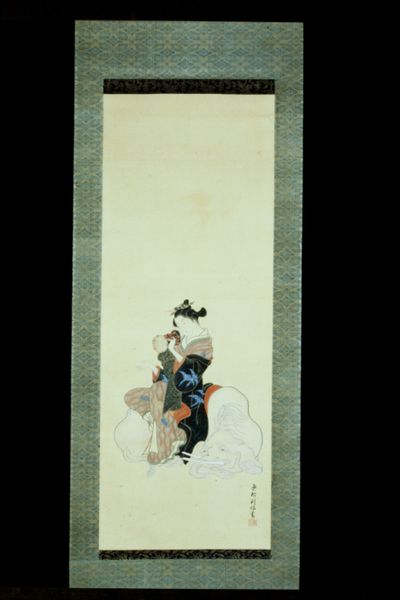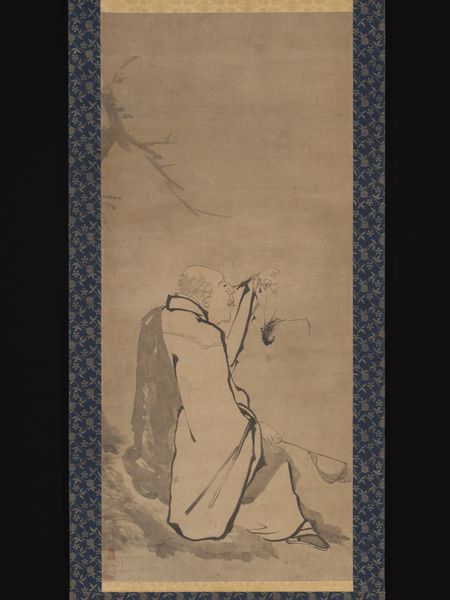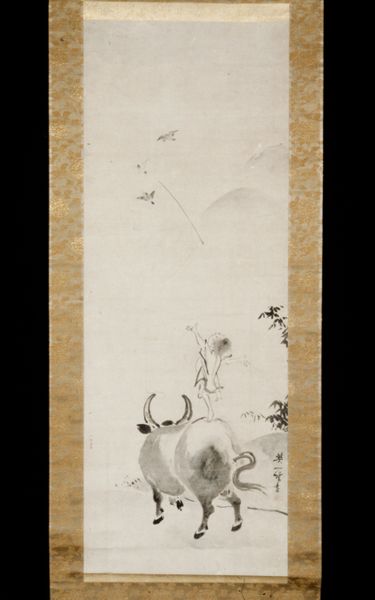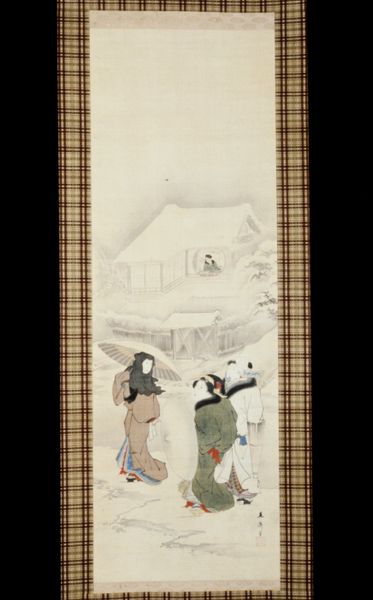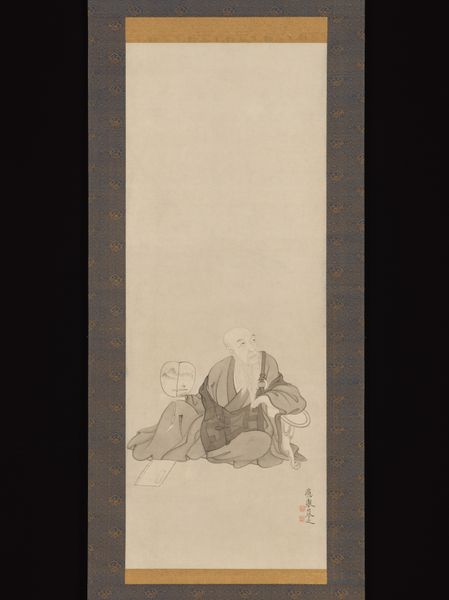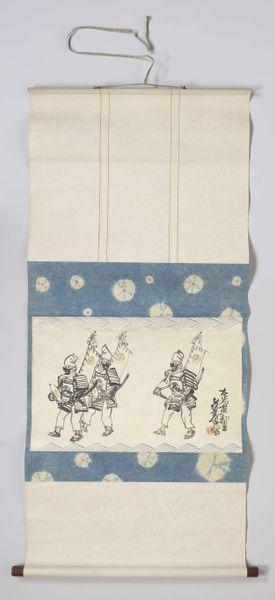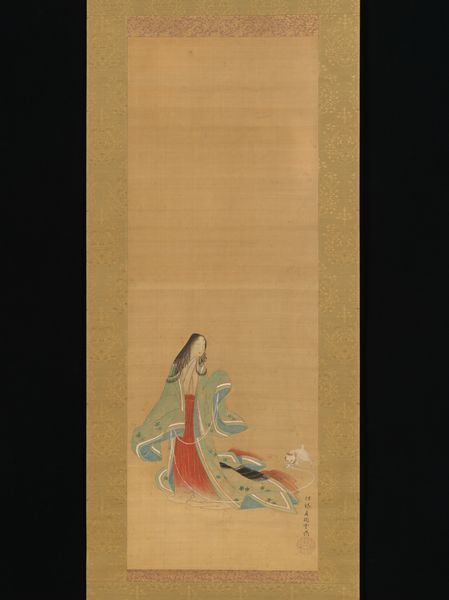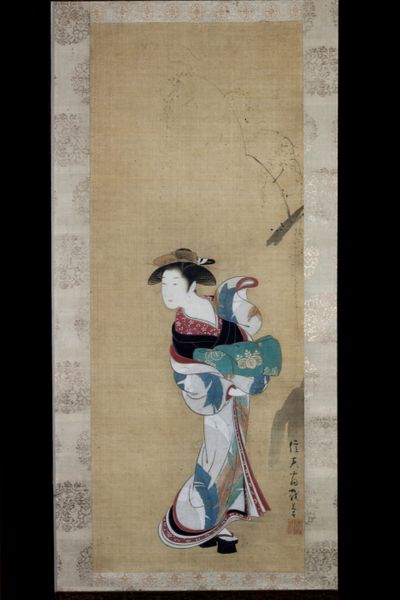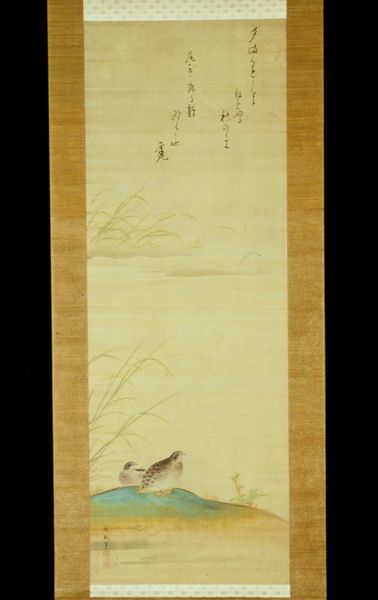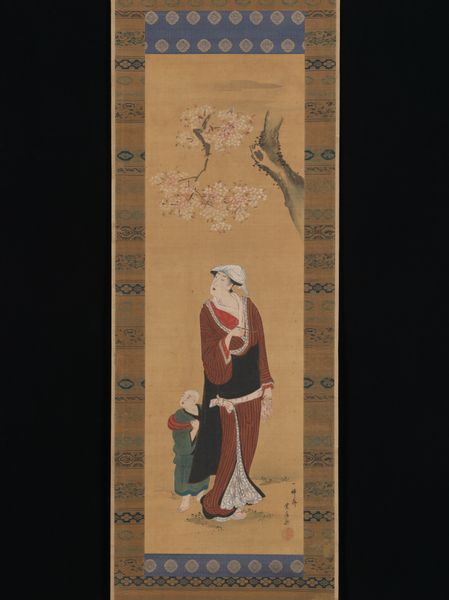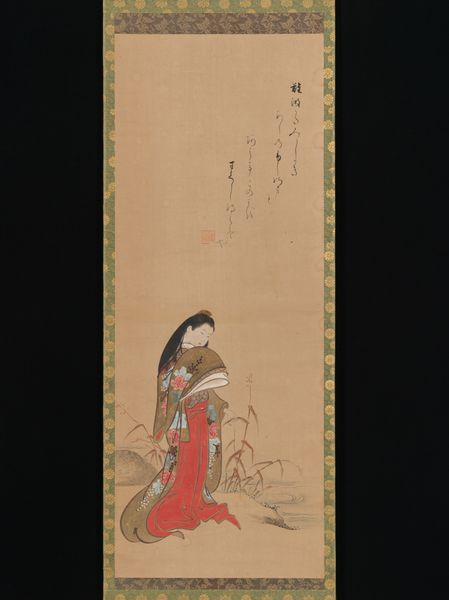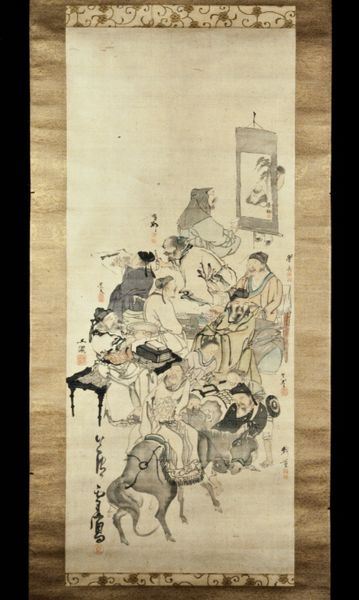
drawing, ink
#
portrait
#
drawing
#
asian-art
#
etching
#
ukiyo-e
#
figuration
#
ink
#
genre-painting
Dimensions: 31 1/2 x 12 5/8 in. (80 x 32 cm) (image)68 1/8 x 17 5/16 in. (173 x 44 cm) 49 cm W w/ rollers
Copyright: Public Domain
Curator: I find this hanging scroll incredibly whimsical; its light touch makes it feel very immediate, even today. Editor: This piece, entitled "Manzai Performers," created around 1816 by Katsushika Hokusai, and currently residing in the Minneapolis Institute of Art, certainly possesses a delicate quality. We can appreciate it as an ink drawing from his series of genre paintings within the Ukiyo-e tradition. Curator: Indeed. Look how Hokusai captures movement with so few lines! The dynamic posture of the performers feels like it directly challenges the rigidity expected within those traditional Ukiyo-e social norms. Editor: The scroll format itself invites us to consider the artwork as an unfolding narrative, akin to a performance viewed over time. Note the material itself, a delicate paper substrate easily affected by its environment – humidity, handling – underscoring the ephemeral nature of performance itself. The precarious balance visually expressed between the figures reflects not only the Manzai duo's skills but the inherent instability within marginalized art forms, particularly how socio-economic status dictated what forms were permissible at a specific point. Curator: That's an excellent point. Their performance could easily become a spectacle that questions power. Do you think their gender dynamics reflect broader societal concerns, or do they act more as commentators upon established customs? Editor: One must be cautious of interpreting historical gender roles through a contemporary lens. Still, considering the patronage structures that upheld the art of Hokusai's time, we might look into why gender plays such a critical, almost performative role within this composition. What statement does he make by presenting men in such a manner? Are we truly laughing at social customs through their gestures? Or are we, as viewers complicit within those very constraints of hierarchy displayed? Curator: It forces one to reflect on how such visual forms simultaneously reflected the era's politics but now, can we also reimagine forms and break away from existing norms! Editor: Absolutely! By scrutinizing historical artifacts and grasping what sociopolitical functions they have historically served and considering who those systems failed to protect – as you suggested with gender here – new forms of art expression emerge that reevaluate representation beyond just documentation.
Comments
No comments
Be the first to comment and join the conversation on the ultimate creative platform.


